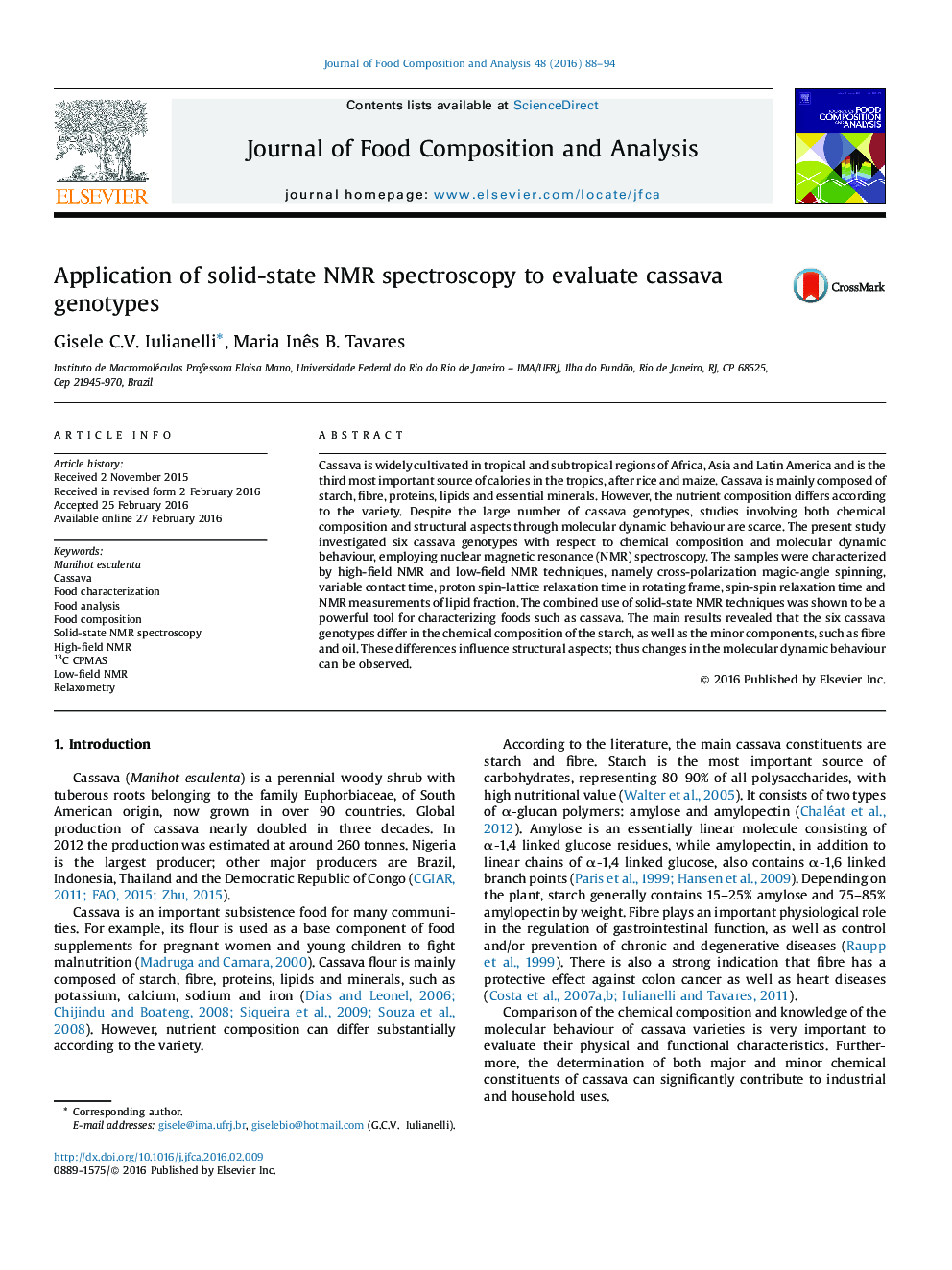| کد مقاله | کد نشریه | سال انتشار | مقاله انگلیسی | نسخه تمام متن |
|---|---|---|---|---|
| 1218133 | 1494494 | 2016 | 7 صفحه PDF | دانلود رایگان |
عنوان انگلیسی مقاله ISI
Application of solid-state NMR spectroscopy to evaluate cassava genotypes
دانلود مقاله + سفارش ترجمه
دانلود مقاله ISI انگلیسی
رایگان برای ایرانیان
کلمات کلیدی
موضوعات مرتبط
مهندسی و علوم پایه
شیمی
شیمی آنالیزی یا شیمی تجزیه
پیش نمایش صفحه اول مقاله

چکیده انگلیسی
Cassava is widely cultivated in tropical and subtropical regions of Africa, Asia and Latin America and is the third most important source of calories in the tropics, after rice and maize. Cassava is mainly composed of starch, fibre, proteins, lipids and essential minerals. However, the nutrient composition differs according to the variety. Despite the large number of cassava genotypes, studies involving both chemical composition and structural aspects through molecular dynamic behaviour are scarce. The present study investigated six cassava genotypes with respect to chemical composition and molecular dynamic behaviour, employing nuclear magnetic resonance (NMR) spectroscopy. The samples were characterized by high-field NMR and low-field NMR techniques, namely cross-polarization magic-angle spinning, variable contact time, proton spin-lattice relaxation time in rotating frame, spin-spin relaxation time and NMR measurements of lipid fraction. The combined use of solid-state NMR techniques was shown to be a powerful tool for characterizing foods such as cassava. The main results revealed that the six cassava genotypes differ in the chemical composition of the starch, as well as the minor components, such as fibre and oil. These differences influence structural aspects; thus changes in the molecular dynamic behaviour can be observed.
ناشر
Database: Elsevier - ScienceDirect (ساینس دایرکت)
Journal: Journal of Food Composition and Analysis - Volume 48, May 2016, Pages 88-94
Journal: Journal of Food Composition and Analysis - Volume 48, May 2016, Pages 88-94
نویسندگان
Gisele C.V. Iulianelli, Maria Inês B. Tavares,